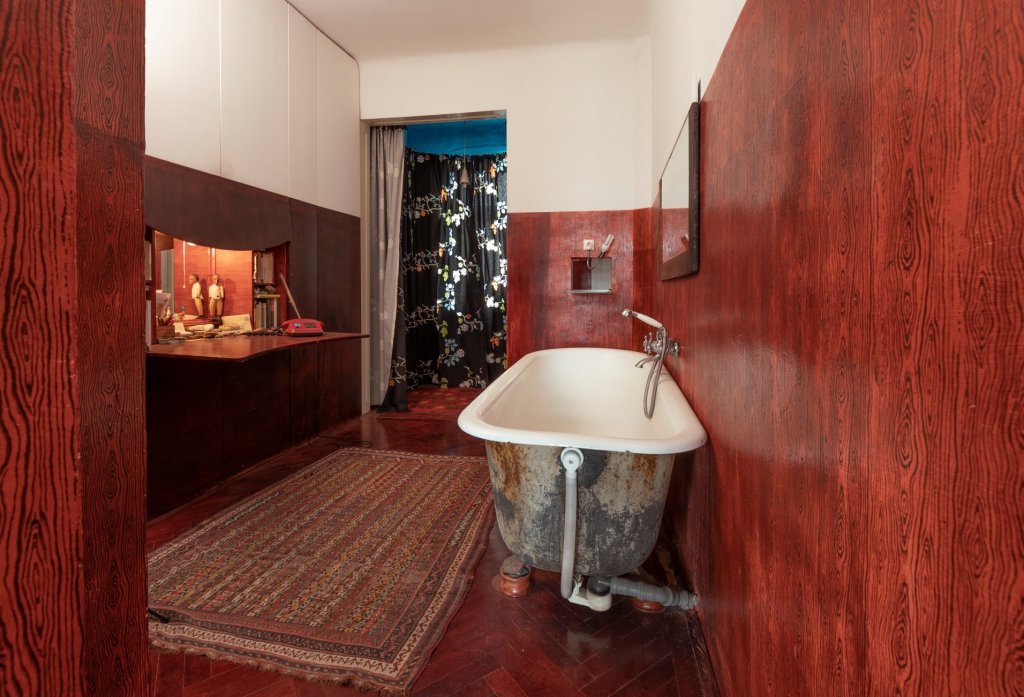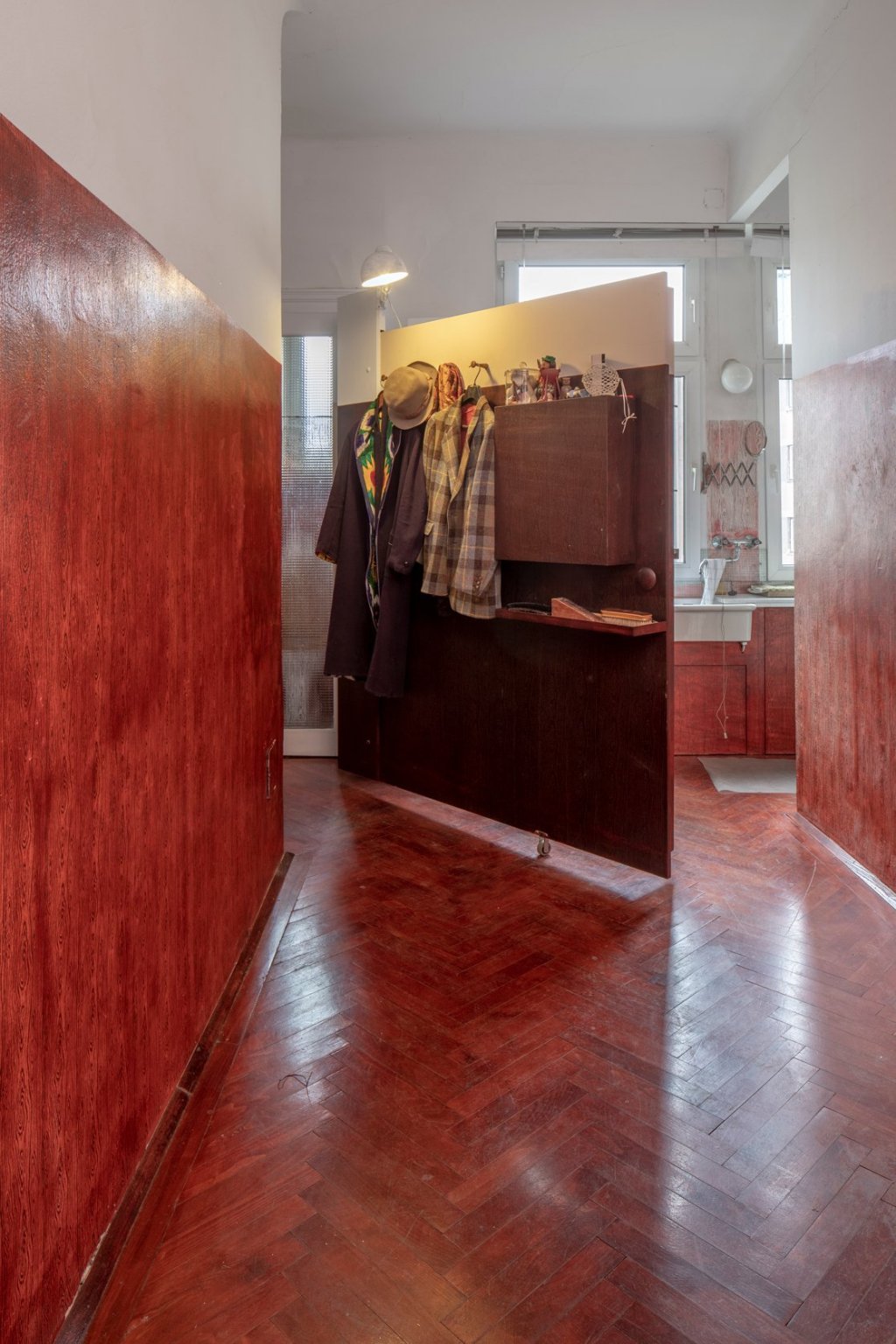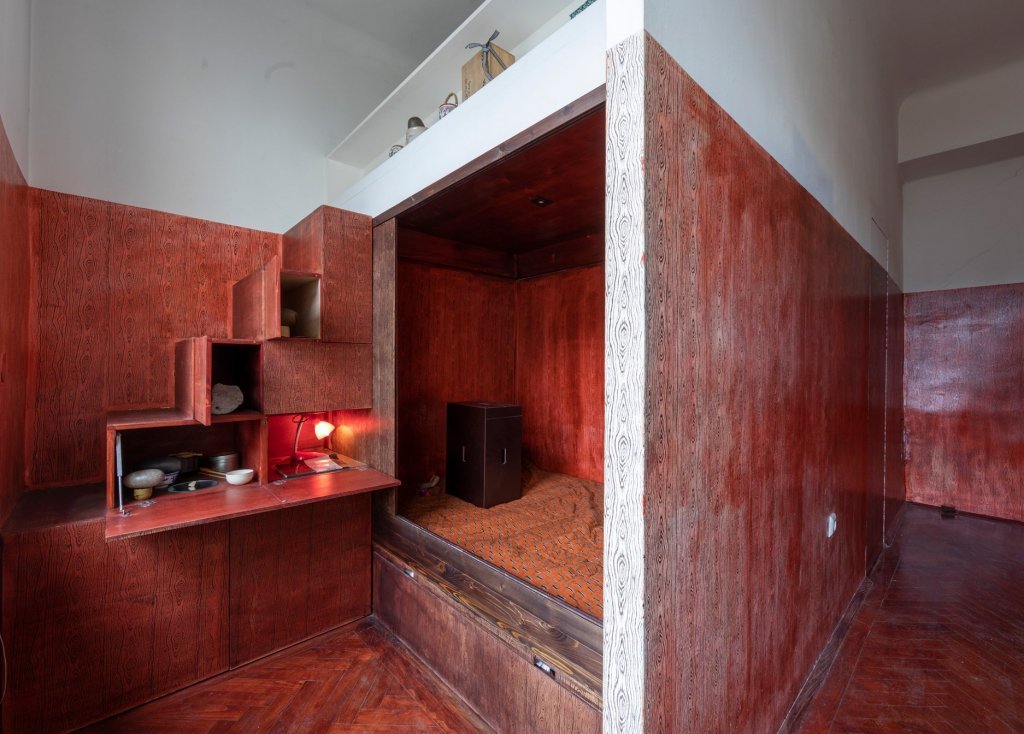Heinz Frank and his metaphorical self-portraits
We provide an overview of rediscovered Viennese artist Heinz Frank, a true contemporary master that defies art history and trends.

Heinz Frank at Kunsthalle Wien, April 2019. Photo by Piero Bisello.
—
All artworks are self-portraits of the artist. This phrase comes across as false when considering figurative art, as not all the figuration is a figure of the artist after all. But when figurative art only plays a small role in the art world, we might look at this sentence in a different way—metaphorically so to speak. For example, we might consider the individuality of the artist present in the artwork as a sufficient condition for the artwork to be a self-portrait. The artwork of Viennese Heinz Frank prompts this thought naturally, or at least it did when we went see his installation at Kunsthalle Wien a few weeks ago. During that visit, we had the chance to listen to Frank in person, a dialogue and monologue in his Viennese dialect translated into English and quoted here thanks to Claudia Cavallar and Daniel Scott.
Trained as an electrical engineer and architect before becoming an artist, the eighty-year-old Heinz Frank has had a solid yet local career in his native Vienna, and his international recognition is only recent. Perhaps for this reason, his artwork is difficult to situate within larger historical trends and discourses. More than most artists, his practice is especially his, and in this regard it comes across as a series of these metaphorical self portraits mentioned above. To some extent, his specificity and being away from fashions draws him close to an outsider artist, whose production tends to be pure self-expression rather than an answer to general artistic questions.

Der Winkel Des Endes Kommt Immer Von Hinten, (The Angle Of The End Always Comes From Behind). Kunsthalle Wien, Vienna, 2019. Photo by Jorit Aust.
An Art Process
To clarify, let us start with Frank’s process, which is a specific as it gets. During our visit to Vienna, he told us that the beginning of each piece is for him a “felt thinking” or a “thought feeling”, which can come from the most banal situations, for example walking. He then transcribes this “felt thinking” or “thought feeling” as text onto pieces of paper. From that moment he said, the difficult part begins, that is, he needs to translate these texts into a physical object that can be experienced by everybody else, that can be used in exhibitions, that can be circulated and sold.
However, perfect translation is never possible. The “felt thinking” or “thought feeling” of Heinz Frank is never fully visible by someone else, and he told us that production of artworks is good only when that which you see is exactly what he thought. He confirmed that the aim is to represent what is written in the pieces of paper as much as possible in the artworks, to the final point in which the pieces of paper can be completely erased. Speculating, we think this would be the moment when an artwork is the perfect self-portrait of Heinz Frank. Otherwise, that what is important in a less-than-perfect self portrait is that which you cannot see, as he said.

Heinz Frank, Säulenhalle, Academy of Fine Arts, Vienna, 2015. Photo by Wolfgang Thaler.
Forms and Installations
Beyond the process and these always unmet expectations of the artist, there are the formal qualities of Frank’s artwork, which are striking. From the exhibition at Bureau des Realités in Brussels (collaboration with his gallery LambdaLambdaLambda) to the installation at Kunsthalle Wien, his pieces from forty plus years of production are recombined today by the artist himself in really fine installations.
The recurring elements in his practice are the use of cast aluminium for sculptures, the presence of oriental rugs (which, he told us, were bought in a public auction long time ago and are used merely for they aesthetic beauty and the feeling of domesticity they bring to the space), masks of different kinds, and pierced paintings and drawings of various degrees of figuration. Altogether, these elements form a whole, that is, the installation, which appears as coherent thanks to the specific atmosphere it provokes.

Studio Heinz Frank, Vienna, 2018. Photo by Wolfgang Thaler.
Site Specificity and Architecture
Moreover, there is an important site specificity to his work. For his show in Brussels, Frank played with the design of the floor boards, reproducing it on his pieces in different ways. In Vienna, his strategy was to exploit the transparency of the glass walls (transparency being an idea that is pleasant to him [es ist mir gern]), making visible the back of the paintings from outside while leaving a large concrete wall empty—what he called the “resolution” of the exhibition. Asked how he deals with architectural specificity for his installation, he answered us that most parts of it were just the powerful products of luck, confirming that most of his choices for the exhibitions were made with closed eyes—a truly honest answer.

Das Loch In Meiner Seele Und Ihr Gläsernes Kleid (The Hole In My Soul And Its Transparent Dress), Heinz Frank at LambdaLambdaLambda at Bureau des Réalités, Brussels, 2018. Photo by Isabelle Arthuis.
An unordinary personality indeed, Frank’s universe of metaphorical self-portraits stretches to his apartment in Vienna, in which the inhabitable space is as tall as the inhabitant, marked by red paint on indeed taller walls. In a way, elements there remind of his art installations—for example the presence of rugs and masks—yet with a very unconventional domesticity, or Häuslichkeit. In this regard, he told us that people have the strange idea that the houses in which they live are architectures, whereas Frank is convinced that the real domestic architecture is our own bodies, those are our houses he said. This somewhat explains his interior design choices following the body as architectural measure.

From Der Winkel Des Endes Kommt Immer Von Hinten, (The Angle Of The End Always Comes From Behind), Kunsthalle Wien, Vienna, 2019. Photo by Jorit Aust.
Let’s conclude with a quote from Cynthia Freeland’s book Portraits and Persons: “a self-portrait in effect dramatizes or enacts something important about each of us: that in our lives, we constantly present ourselves visually to others. This goes beyond, and is distinct from, the project of narrating ourselves first to ourselves and secondarily to others.” As explained earlier in this article, Frank’s artwork with its topic of faithful translation of the artist’s thoughts and feelings—as well as the combination of the two—can be read as this visual presentation Freeland talks about. And although this whole practice might sound as a narcissistic exercise by the artist, the viewer can rejoice at the striking forms and atmospheres these metaphorical self-portraits bring about.
An Artist Apartment
This is a duly update. After the passing of Heinz Frank in August 2020, his Vienna apartment has become one of the public traces of his earthly existence. This home beautifully reflects the specificities of a compelling persona. Here is a selection of images by Wolfgang Thaler, courtesy of gallery LambdaLambdaLambda, Pristina.




April 23, 2021
